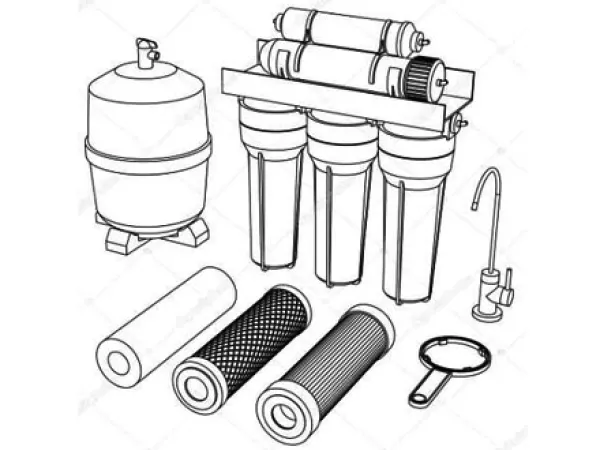What is the Reverse Osmosis Mechanism Model?
Aug. 06, 2021
There are several different features of classic models:
1. Priority adsorption capillary pore model: Weak spots, no pores are found under the dry electron microscope. The wet film specimen is not the sample of the electron microscope.
2. Dissolution and diffusion model: It is not considered to have holes.
3. Dry closed and wet open model: the most appropriate modern reverse osmosis mechanism model that can explain the unity of the 1 and 2 models. Both the "dry closed and wet open" reverse osmosis model unifies the two most classic reverse osmosis mechanism models, the pore model and the dissolution diffusion model.
Commercial RO Membrane
This question is so profound that scientists have not yet been able to fully explain it clearly. In fact, it is enough to understand the reverse osmosis phenomenon clearly. The following three theories are mainly popular in the academic circles to explain the mechanism of reverse osmosis separation:
1. Dissolution-diffusion model
Explain the dissolution-diffusion model of reverse osmosis phenomenon. He regarded the active surface skin layer of reverse osmosis as a dense non-porous membrane, and assumed that both solutes and solvents could be dissolved in a homogeneous non-porous membrane surface layer, and each would diffuse through the membrane under the impetus of chemical potential caused by concentration or pressure. The difference in solubility and the difference in the diffusibility of solutes and solvents in the membrane phase affect the amount of energy they pass through the membrane. The specific process is divided into: the first step, the solute and the solvent are adsorbed and dissolved on the surface of the liquid side of the membrane; the second step, there is no interaction between the solute and the solvent, they are molecularly diffused under the promotion of their respective chemical potentials. The method passes through the active layer of the reverse osmosis membrane; in the third step, the solute and solvent are desorbed on the surface of the permeate side of the membrane.
In the above process of solute and solvent permeating the membrane, it is generally assumed that the first and third steps are carried out very quickly. At this time, the permeation rate depends on the second step, that is, the solute and solvent are driven by the chemical potential difference. Diffusion means through the membrane. due to
The selectivity of the membrane allows the separation of gas mixtures or liquid mixtures. The permeability of a substance depends not only on the diffusion coefficient, but also on its solubility in the membrane.
2. Priority adsorption—capillary flow theory
When different kinds of substances are dissolved in the liquid, its surface tension will change differently. For example, organic substances such as alcohols, acids, aldehydes, and fats dissolved in water can reduce the surface tension, but when dissolved in some inorganic salts, the surface tension will increase slightly. This is because the solute dispersion is not uniform. That is, the concentration of the solute in the surface layer of the solution is different from the concentration inside the solution. This is the surface adsorption phenomenon of the solution. When the aqueous solution is in contact with the polymer porous membrane, if the membrane's chemical properties make the membrane negatively adsorb solutes and preferentially adsorb water, a pure water layer of a certain thickness will be formed on the interface between the membrane and the solution. . Under the action of external pressure, it will pass through the capillary pores on the surface of the membrane to obtain pure water.
Our company also has Commercial RO Membrane on sale, welcome to contact us.









